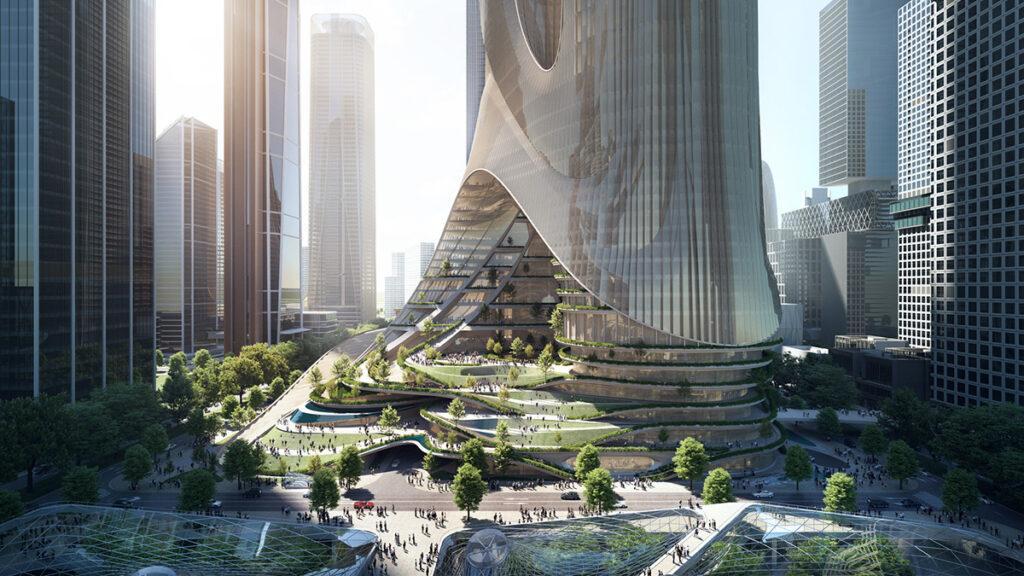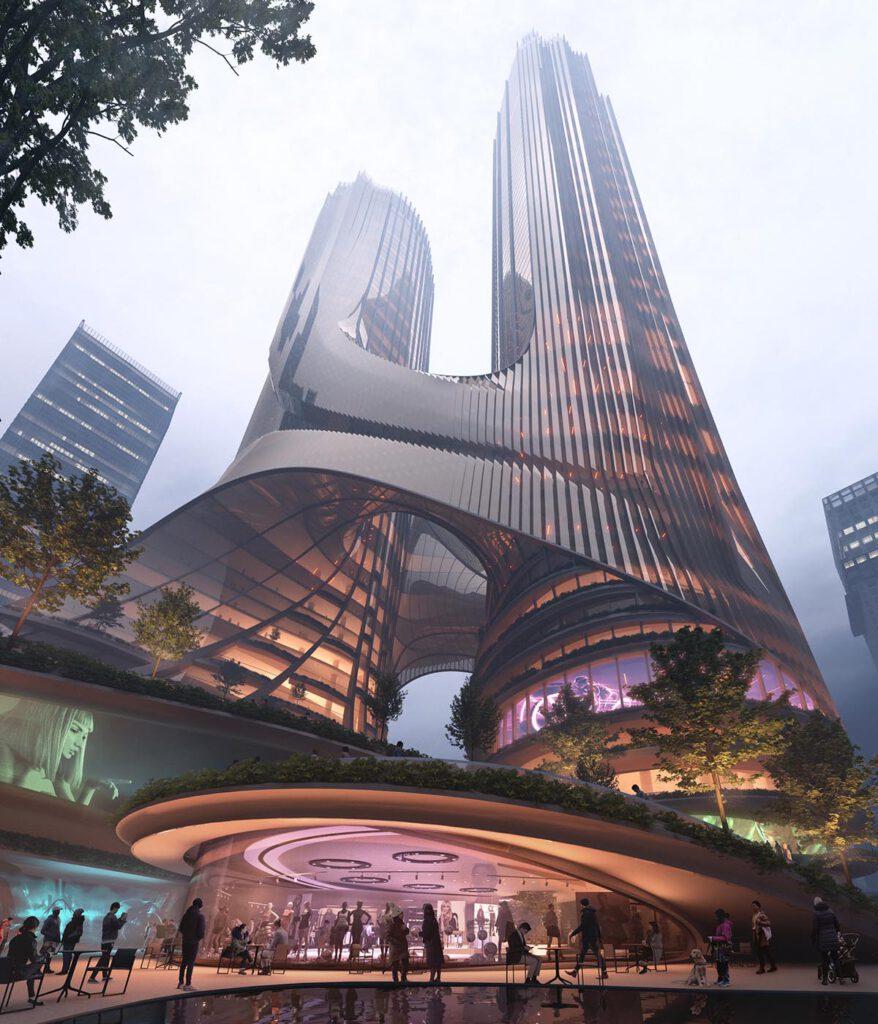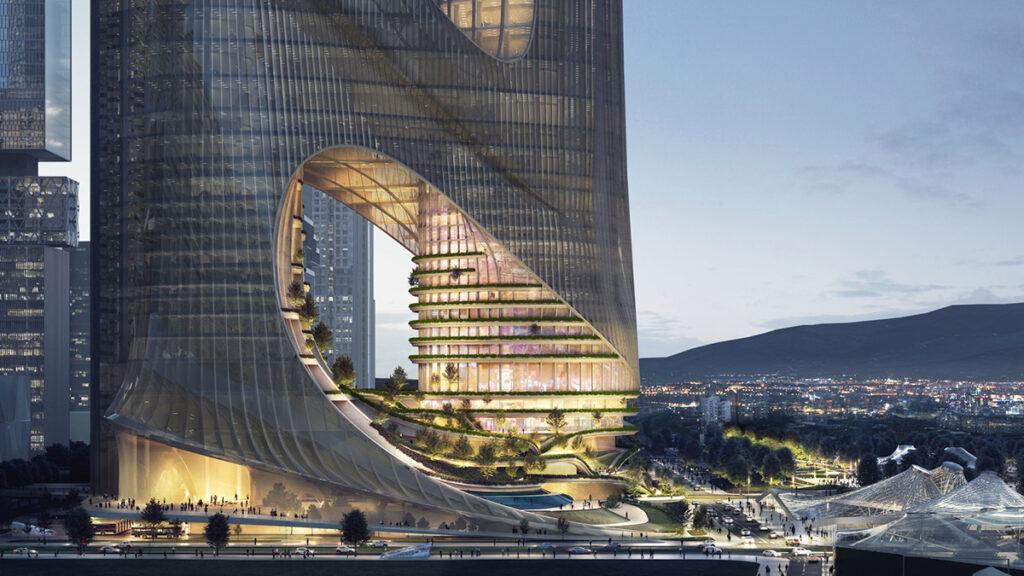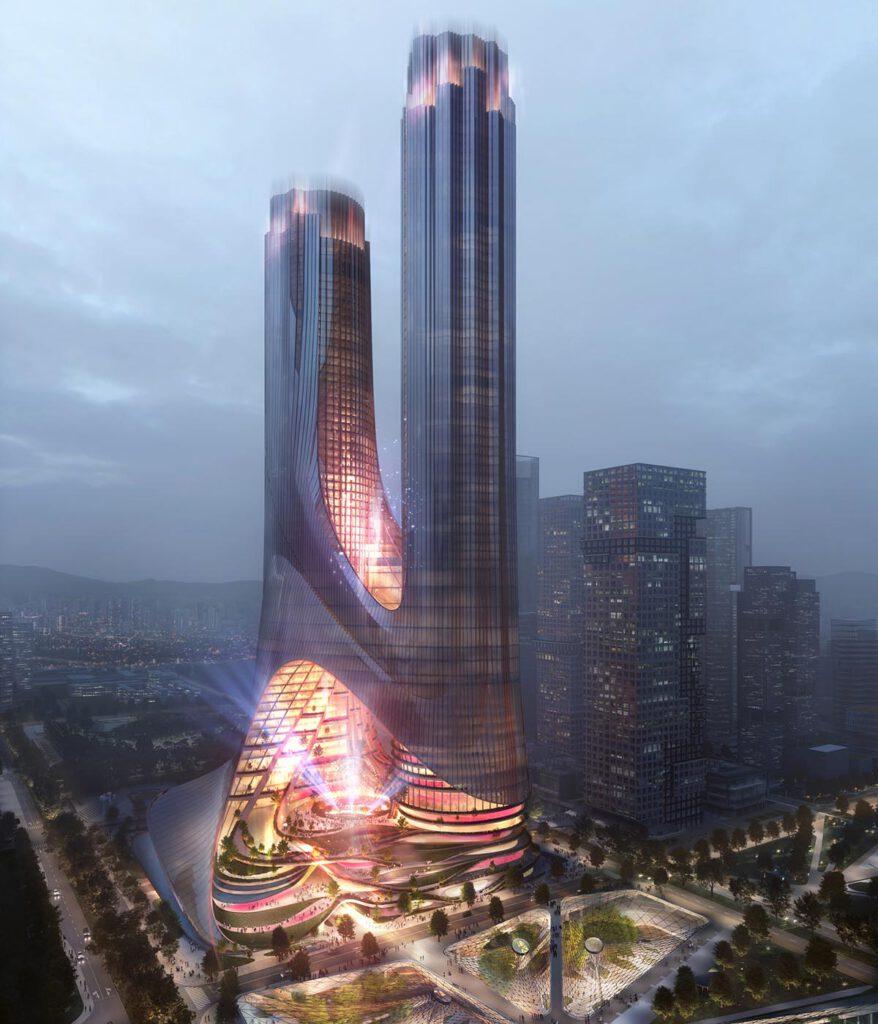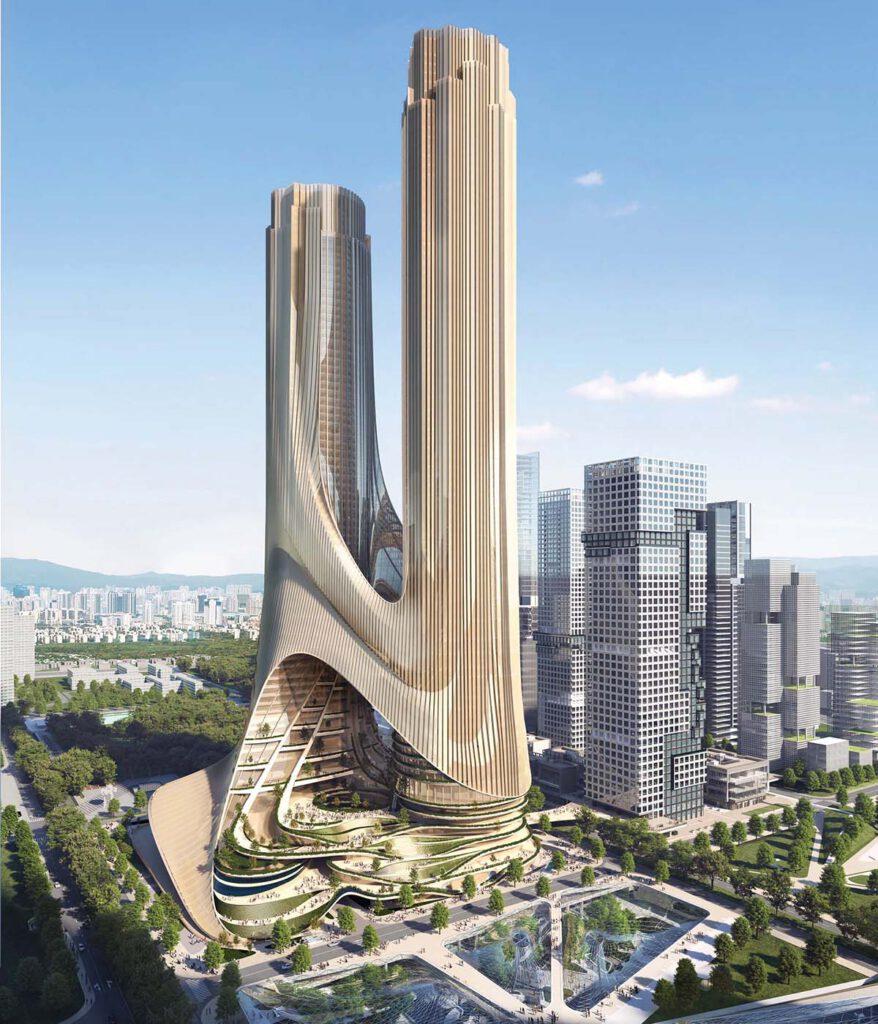The digital world of tomorrow
In China, Zaha Hadid Architects are building two 400-metre giant structures that make sensational use of digital possibilities. With its smart solutions, Tower C is efficient and, above all, environmentally friendly.
If we were talking about anywhere but China, the word cronyism would spring to mind. But in China you need to have more to offer than an old school tie.
Hitting the spot in China
Patrik Schumacher, head of Zaha Hadid Architects (ZHA), clearly has a feel for what will go down well in the People’s Republic of China. After all, the number of projects that he has landed there in recent years is nothing short of staggering.
Such as the Leeza SOHO tower in Beijing. Or Beijing Daxing International Airport. Or the new headquarters of mobile phone manufacturer OPPO in Shenzhen, where Schumacher and his projects are all the rage. And ZHA were also commissioned with building the pebble-shaped Science & Technology Museum in the new Guangming Science City.
And now we have the gigantic Tower C. These are projects for which pretty much all leading international architecture firms have been vying. But when you see what the latest creation has to offer, there is no doubting that the Chinese picked a real winner this time. Because it is truly amazing.
Let’s look at the key statistics first. Architectural firms were invited to submit tenders for a colossal office and shopping complex that would house a cluster of company headquarters, conference centres and residential areas. Essentially a fully functioning city in which 300,000 people can live and work. Albeit on a very limited base area right in the Bay of Shenzhen.
Tower C: a vertical city
This made it clear that all designs would need to reach great heights, in every sense. As was indeed the case with ZHA’s concept, which has two parallel towers rising a spectacular 400 metres into the Chinese sky.
At the same time, it makes full use of the available base area through a striking multi-storey podium. However, as well as connecting the two towers directly to the subway network below and creating green spaces, the stepped podium uses a nifty architectural trick to direct a maximum of daylight into the two “hugging” towers right above them.
The architects themselves go as far as to describe this foundation as the “heart” of the building complex: “Connecting directly with its adjacent park and plazas which transform into a terraced landscape extending upwards within its two towers, the design invites the public into the heart of the building. Tower C’s stepped podium integrates with the park to create a new public space for this dynamic city that has grown to become a global centre of technology innovation.”
Technology: the real centrepiece
Which leads us to the actual centrepiece of Tower C – the technological wizardry that makes this project the only one of its kind in the world. In simple terms, the two towers have a highly complex data centre which, with the aid of various sensors, collects and evaluates – in real time – data from all rooms and outside areas, and initiates any responses that are needed from the building technology.
But what does this mean in practical terms? Let’s start with the towers’ double-insulated glass façade. This is equipped with vertical channels and, at the same time, with adjustable shading elements. Air temperature is constantly measured by sensors between the layers of glass – if one area is exposed to too much sunlight, the hot air is diverted away and replaced with cooler air. And the shading elements are automatically readjusted.
Things function in much the same way inside the building. Here, sensors monitor the air quality and use specialist technology to ensure that the climate in each part of the building is always suitable for the activities taking place there. Pollution from the local environment is also filtered so that it cannot penetrate the building. All of which happens in real time. Even the garden areas on the individual terraces are watered and fertilized automatically.
Photovoltaic energy
Unsurprisingly, the energy needed to power these high-tech features is generated by the building’s own large-scale photovoltaic system, while a water collection and treatment facility is also planned. And it only stands to reason that the materials used for the entire building are recycled or have a negligible CO2 footprint.
Smart and sustainable
What is so captivating about Tower C is that it is the first project of its magnitude to combine the two megatrends of modern architecture: sustainability and smart design.
At any rate, Tower C gives a tantalizing foretaste of what we can certainly expect to see here in Europe before long: buildings that offer more than just a roof over our heads.
Text: Johannes Stühlinger
Translation: Rosemary Bridger-Lippe
Images: ZHA / Brick
